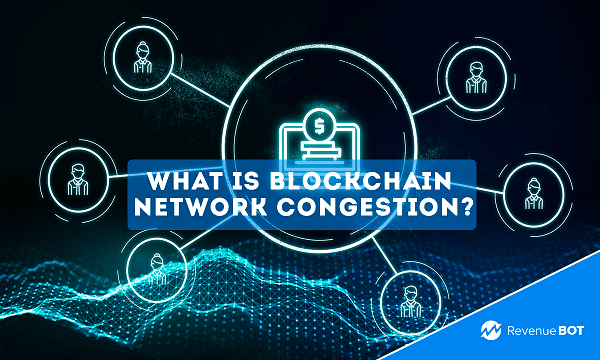
While being the famous technology behind all cryptocurrencies and a plethora of other projects, blockchain has gained a lot of attention in the world of finance, business and tech. However, like any other development, blockchain still comes with certain drawbacks and limitations of any kind. In fact, one of the most daunting challenges such a system can face is network congestion. Here we will take a look at what exactly is meant by network congestion, what factors can cause such an issue, and specify all possible steps you can take to prevent it.

Importance of smooth transaction processing
As a decentralized technology, blockchain depends on network participants who perform various operations, including sending and receiving crypto, recording data, and executing smart contracts. The efficient handling of all these activities becomes a critical component of a blockchain’s success.
- Security and reliability: First and foremost, proper and trustworthy processing ensures the overall safety of the network. Each transaction must be verified and recorded in the blockchain according to a set of rules. Inadequate processing can lead to errors, fraud, and data breaches.
- Swiftness and scalability: The level of efficiency in how transactions are processed also impacts the blockchain operating speed. Faster processing implies that users get to send and receive transactions instantly, something that is vital to the user experience when dealing with cryptocurrencies and other related applications. Moreover, the scalability of a blockchain network, i.e., its ability to handle a large number of transactions, is essential for global networks.
- Reduced fees:For a transaction to be efficient it is also about the fee rate that users pay to conduct them. Should network congestion occur, fees may go through the roof, making blockchain usage more expensive and less attractive.
- Eliminating disputes and blockchain forks: By ensuring proper transaction processing, you can avoid various conflicts that can arise from uncoordinated transactions and lack of network cohesion as well as prevent the spread of forks.
Causes of network congestion
Such delays in the operation of a network doesn’t come out of thin air. They stem from a number of key factors that can lead to latency and escalating fees.

Among the key factors contributing to congestion are high transaction volumes. Once the total number of transactions suddenly spikes, it can cause the network to face a shortage of computing resources to process them. Higher transaction volumes can cause delays in validation and increased fees, which can affect the usability.
As the scope of blockchain usage expands steadily, more and more companies and individuals are venturing into transactions on the blockchain. This includes the use of decentralized applications (dApps), decentralized finance platforms (DeFi) and the simultaneous execution of smart contracts. Collectively, all of these factors put a huge strain on network resources, causing an overload.
Events such as Initial Coin Offerings (ICOs) and token sales entice many investors looking to take part in blockchain projects. As a result, the large number of transactions associated with these activities can add to the already existing stress.
Attackers can resort to low-cost attacks, such as sending multiple low-value transactions or engaging in other types of manipulation, in order to deliberately congest the network. This can lead to poor network performance and longer transaction validation period.
Last but not least, physical disruptions such as poor internet connectivity can trigger data flow problems and also contribute to congestion. Insufficient bandwidth or hardware infrastructure problems can similarly limit the network’s capacity to handle large transaction volumes.
Possible consequences
Once the network is overloaded, different aspects of the blockchain ecosystem can be severely impacted. Here are some of the major implications:
- Transaction validation delays: When a network is congested, transactions can remain unconfirmed for a longer period of time, thus impacting services and applications that depend on timely payments. There have been cases of transaction latency on the Ethereum during the CryptoKitties boom in 2017, for example.
- Increased fees: as we said earlier, network congestion is usually accompanied by an uptick in transaction processing fees. Users might have to pay steeper fees to speed up their transactions and bypass delays. This is especially true for small transactions.

- Distraction of developers: devs may need to devote extra time and resources to resolving network congestion issues instead of improving functionality and UX. This can slacken the development of new features and enhancements as well as slow down their further implementation.
Conclusion
Blockchain network congestion is quite a challenge that can lead to a wide range of consequences for both users and developers. High transaction volumes, the proliferation of blockchain, speculative attacks and other factors can trigger congestion, leading to latency, higher fees and a poorer user experience.
Nonetheless, by managing and developing effective solutions for scaling up the blockchain network and taking into account the past experiences, the effects can be mitigated and the blockchain can operate in a more stable manner. Developers, users and members of the blockchain community alike can keep working to improve networks and design tools to combat congestion, which would promote the blockchain technology as a whole.
